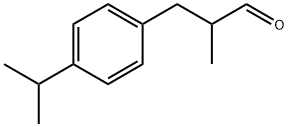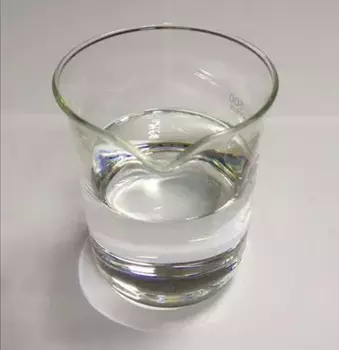Decyl aldehyde
Synonym(s):Capraldehyde;Caprinaldehyde;Decanal;Decyl aldehyde
- CAS NO.:112-31-2
- Empirical Formula: C10H20O
- Molecular Weight: 156.27
- MDL number: MFCD00007031
- EINECS: 203-957-4
- SAFETY DATA SHEET (SDS)
- Update Date: 2024-12-18 14:07:02

What is Decyl aldehyde?
Chemical properties
colourless liquid, an important component of citrus
Chemical properties
Decanal is a component of many essential oils (e.g., neroli oil) and various citrus peel oils. It is a colorless liquid with a strong odor, reminiscent of orange peel, which changes to a fresh citrus odor when diluted. Decanal is used in low concentrations in blossom fragrances (especially
Chemical properties
Decanal has a penetrating, sweet, waxy, floral, citrus, pronounced fatty odor that develops a floral character on dilution and fatty, citrus-like taste.
Occurrence
Among the aliphatic aldehydes, it has the largest natural occurrence in a variety of essential oils and extraction products: lemongrass, lavender, Taiwan citronella, sweet orange, mandarin, grapefruit, orris, coriander, Acacia farnesiana Willd., lemon (from different sources), bitter orange, petitgrain bergamot, petitgrain lime, lime and Bulgarian clary sage. Also reported found in citrus peel oils and juices, apple, apricots, avocado, guava, strawberry, baked potato, tomato, rice, ginger, mozarella cheese, other cheeses, butter, milk, lean fish, cooked chicken, beef, pork, beer, tea, cocoa, roasted peanuts, pecans, soybeans, coconut oil, coriander seed and leaf and corn oil.
The Uses of Decyl aldehyde
Decanal is used in fragrances and flavoring and it is an important component in citrus along with octanal, citral, and sinensal. It is also used in Air Care Products, Laundry and Dishwashing Products, Personal Care Products.
Definition
ChEBI: A fatty aldehyde formally arising from reduction of the carboxy group of capric acid (decanoic acid).
Preparation
Industrially prepared by oxidation of n-decanol or by reduction of the corresponding acid.
Aroma threshold values
Detection: 0.1 to 6 ppb; recognition: 9 ppb; aroma characteristics at 1.0%; sweet clean orange, citrus-like, waxy and aldehydic, woody, candy-like with a floral and cilantro stem nuance.
Taste threshold values
Taste characteristics at 10 ppm in 5% sugar and 0.1% CA. Sweet citrus body, orange, waxy and slightly woody with a cilantro stem and geranium floral nuance.
Synthesis Reference(s)
The Journal of Organic Chemistry, 32, p. 2356, 1967 DOI: 10.1021/jo01282a605
Tetrahedron Letters, 31, p. 4825, 1990 DOI: 10.1016/S0040-4039(00)97742-6
General Description
Colorless to light yellow liquid with a pleasant odor. Floats on water. Freezing point in 64°F.
Air & Water Reactions
Insoluble in water.
Reactivity Profile
Decanal is an aldehyde. Aldehydes are frequently involved in self-condensation or polymerization reactions. These reactions are exothermic; they are often catalyzed by acid. Aldehydes are readily oxidized to give carboxylic acids. Flammable and/or toxic gases are generated by the combination of aldehydes with azo, diazo compounds, dithiocarbamates, nitrides, and strong reducing agents. Aldehydes can react with air to give first peroxo acids, and ultimately carboxylic acids. These autoxidation reactions are activated by light, catalyzed by salts of transition metals, and are autocatalytic (catalyzed by the products of the reaction). The addition of stabilizers (antioxidants) to shipments of aldehydes retards autoxidation.
Health Hazard
On direct contact can produce eye and skin irritation; low general toxicity.
Flammability and Explosibility
Non flammable
Chemical Reactivity
Reactivity with Water No reaction; Reactivity with Common Materials: No reaction; Stability During Transport: Stable; Neutralizing Agents for Acids and Caustics: Not pertinent; Polymerization: Not pertinent; Inhibitor of Polymerization: Not pertinent.
Safety Profile
: Moderately toxic by ingestion. A severe skin irritant. See also 1 DECANAL. When heated to decomposition it emits acrid smoke and fumes.
Metabolism
See monograph on aldehyde C-8|.
Properties of Decyl aldehyde
| Melting point: | 7 °C |
| Boiling point: | 207-209 °C (lit.) |
| Density | 0.83 g/mL at 20 °C
0.83 g/mL at 25 °C (lit.) |
| vapor density | >1 (vs air) |
| vapor pressure | ~0.15 mm Hg ( 20 °C) |
| refractive index | n |
| FEMA | 2362 | DECANAL |
| Flash point: | 186 °F |
| storage temp. | Store below +30°C. |
| solubility | Acetonitrile (Slightly), Chloroform (Sparingly), Methanol (Slightly) |
| form | liquid |
| color | clear, colorless |
| Odor | Pleasant. |
| Odor Threshold | 0.0004ppm |
| Water Solubility | INSOLUBLE |
| Sensitive | Air Sensitive |
| JECFA Number | 104 |
| BRN | 1362530 |
| Dielectric constant | 8.1(Ambient) |
| Stability: | Stable. Flammable. Incompatible with strong oxidizing agents. |
| CAS DataBase Reference | 112-31-2(CAS DataBase Reference) |
| NIST Chemistry Reference | Decanal(112-31-2) |
| EPA Substance Registry System | Decanal (112-31-2) |
Safety information for Decyl aldehyde
| Signal word | Warning |
| Pictogram(s) |
 Exclamation Mark Irritant GHS07 |
| GHS Hazard Statements |
H319:Serious eye damage/eye irritation |
| Precautionary Statement Codes |
P264:Wash hands thoroughly after handling. P264:Wash skin thouroughly after handling. P280:Wear protective gloves/protective clothing/eye protection/face protection. P305+P351+P338:IF IN EYES: Rinse cautiously with water for several minutes. Remove contact lenses, if present and easy to do. Continuerinsing. P337+P313:IF eye irritation persists: Get medical advice/attention. |
Computed Descriptors for Decyl aldehyde
| InChIKey | KSMVZQYAVGTKIV-UHFFFAOYSA-N |
New Products
Tert-butyl bis(2-chloroethyl)carbamate 4-Methylphenylacetic acid N-Boc-D-alaninol N-BOC-D/L-ALANINOL N-octanoyl benzotriazole 3-Morpholino-1-(4-nitrophenyl)-5,6-dihydropyridin- 2(1H)-one Furan-2,5-Dicarboxylic Acid DIETHYL AMINOMALONATE HYDROCHLORIDE 1,1’-CARBONYLDIIMIDAZOLE R-2-BENZYLOXY PROPIONIC ACID 1,1’-CARBONYLDI (1,2-4 TRIAZOLE) N-METHYL INDAZOLE-3-CARBOXYLIC ACID (2-Hydroxyphenyl)acetonitrile 4-Bromopyrazole 5-BROMO-2CYANO PYRIDINE 5,6-Dimethoxyindanone 5-broMo-2-chloro-N-cyclopentylpyriMidin-4-aMine 2-(Cyanocyclohexyl)acetic acid 4-methoxy-3,5-dinitropyridine 1-(4-(aminomethyl)benzyl)urea hydrochloride 2-aminopropyl benzoate hydrochloride diethyl 2-(2-((tertbutoxycarbonyl)amino) ethyl)malonate tert-butyl 4- (ureidomethyl)benzylcarbamate Ethyl-2-chloro((4-methoxyphenyl)hydrazono)acetateRelated products of tetrahydrofuran








You may like
-
 112-31-2 2-METHYL DECALDEHYDE 98%View Details
112-31-2 2-METHYL DECALDEHYDE 98%View Details
112-31-2 -
 112-31-2 98%View Details
112-31-2 98%View Details
112-31-2 -
 Decanal 98% CAS 112-31-2View Details
Decanal 98% CAS 112-31-2View Details
112-31-2 -
 Decanal CAS 112-31-2View Details
Decanal CAS 112-31-2View Details
112-31-2 -
 Decanal 112-31-2 98%View Details
Decanal 112-31-2 98%View Details
112-31-2 -
 Decanal 98%View Details
Decanal 98%View Details
112-31-2 -
 Decanal CAS 112-31-2View Details
Decanal CAS 112-31-2View Details
112-31-2 -
 Decanal CAS 112-31-2View Details
Decanal CAS 112-31-2View Details
112-31-2